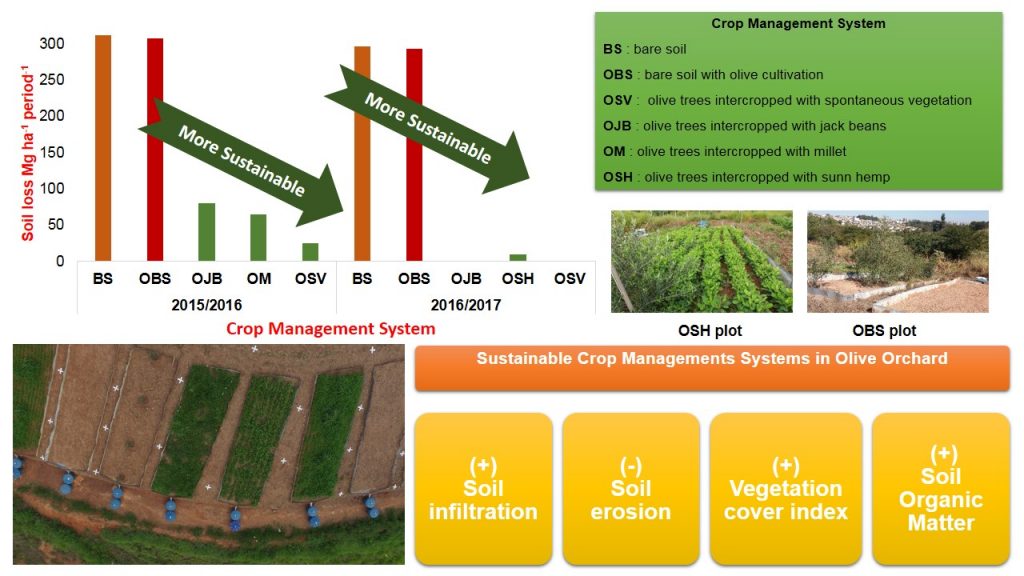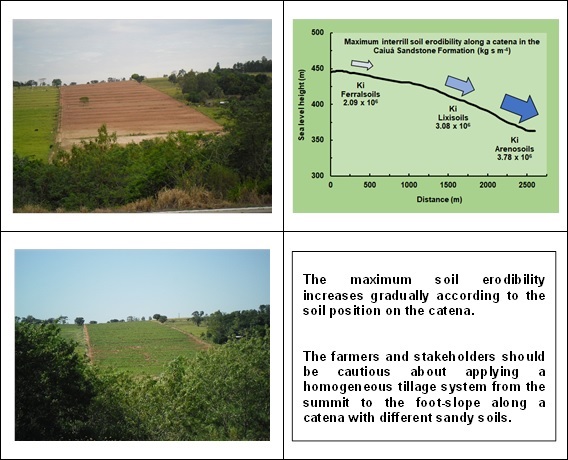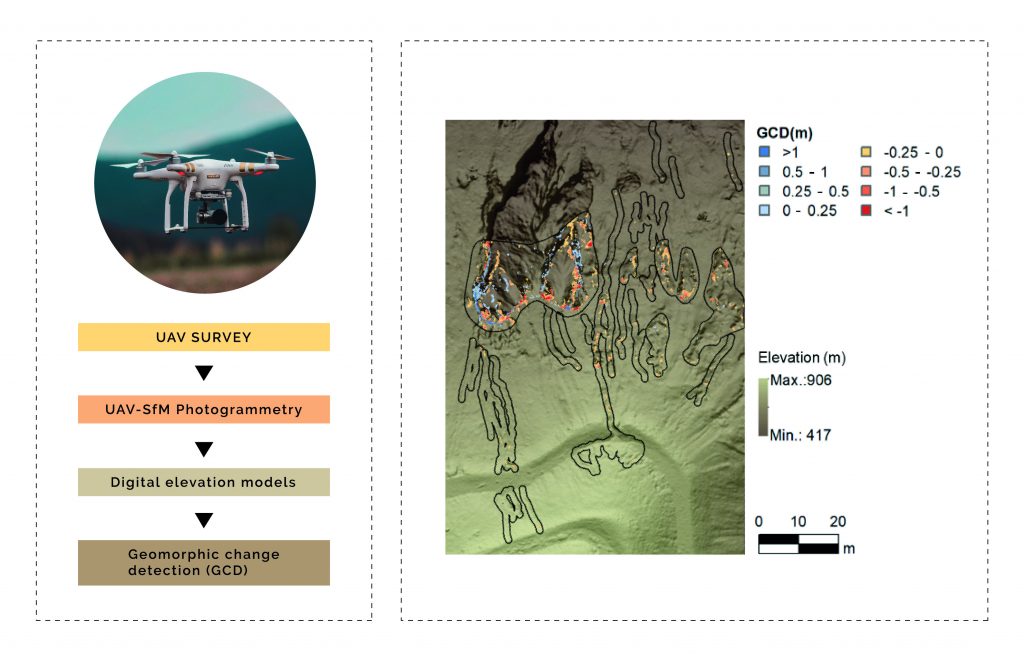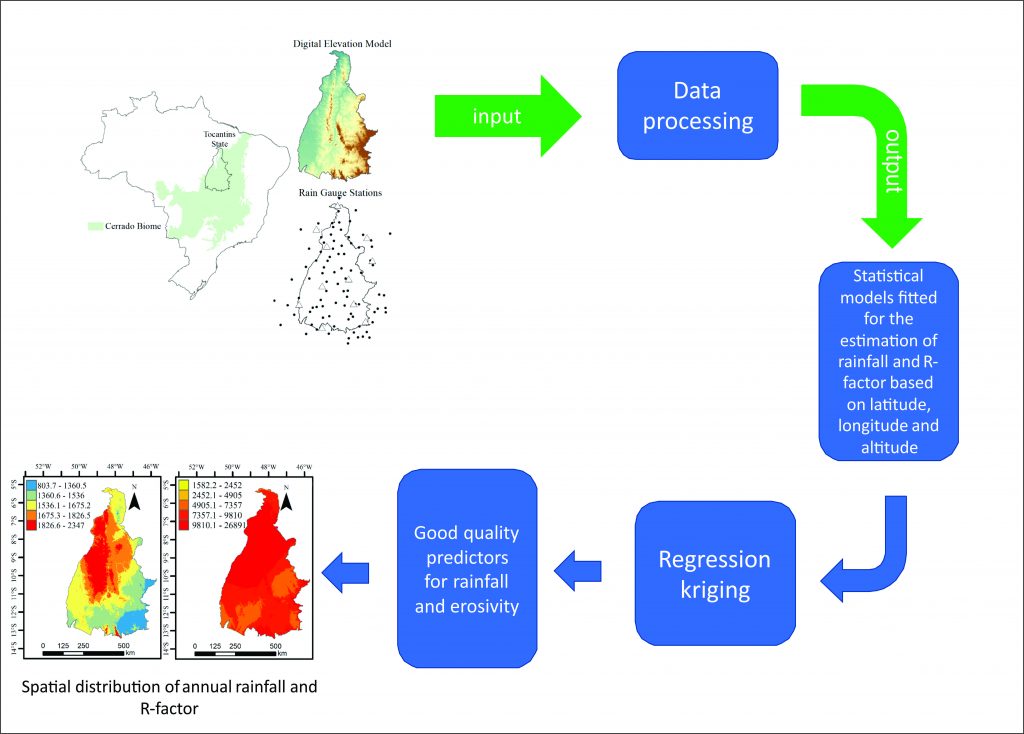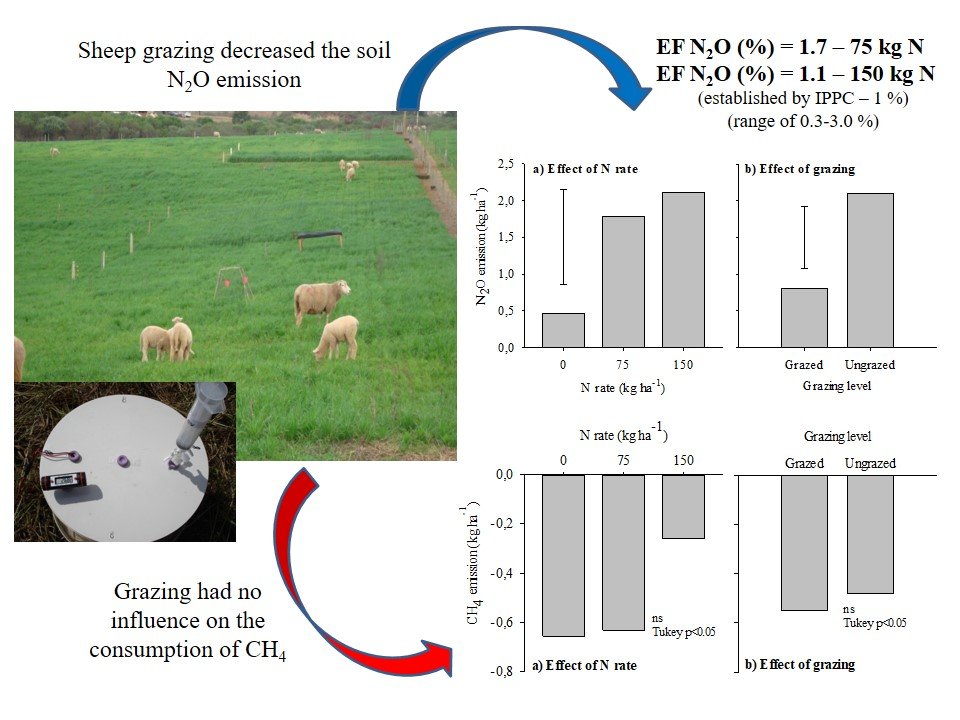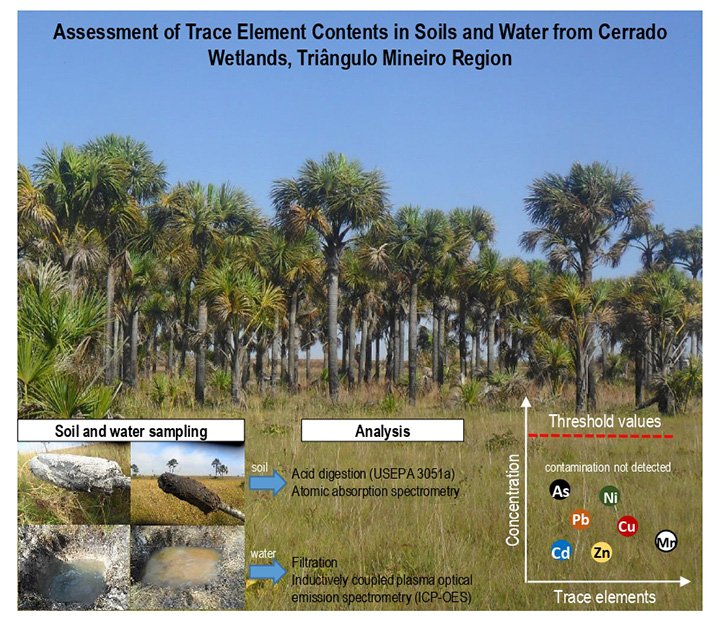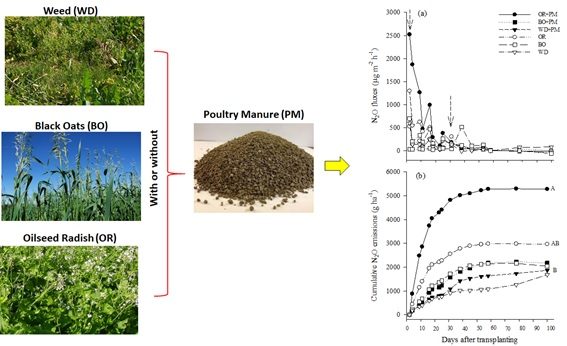Assessment of soil erosion in olive orchards (Olea europaea L.) under cover crops management systems in the tropical region of Brazil
02/abr/2020
ABSTRACT In the tropics, water erosion is one of the most important factors leading to the degradation and deterioration of agricultural land. Olive orchards have a low canopy coverage, especially during the first years after planting, due to the low density of olive trees. Given the fast expansion of olive orchards in Brazil, this study aimed to evaluate the effect of cover vegetation on soil and water losses under natural rainfall. In addition, it was assessed the crop performance and […]
Interrill erodibility of different sandy soils increases along a catena in the Caiuá Sandstone Formation
13/jan/2020
ABSTRACT Soil erosion in tropical areas is a major problem for sustainability in agriculture and soil stability. In the Northwest of Paraná, cassava crop is produced using a conventional tillage system along a catena consisting of different soil classes: Ferralsols (near the summit), Lixisols (mid-slope), and Arenosols (foot-slope). Therefore, differential soil erosion rate and soil degradation are expected along the catena. Here, we test the erodibility of the three sandy soil classes in a representative catena of the Caiuá Sandstone […]
Assessing Water Erosion Processes in Degraded Area Using Unmanned Aerial Vehicle Imagery
07/out/2019
ABSTRACT The use of Unmanned Aerial Vehicles (UAVs) and Structure from Motion (SfM) techniques can contribute to increase the accessibility, accuracy, and resolution of Digital Elevation Models (DEMs) used for soil erosion monitoring. This study aimed to evaluate the use of four DEMs obtained over a year to monitor erosion processes in an erosion-degraded area, with occurrence of rill and gully erosions, and its correlation with accumulated rainfall during the studied period. The DEMs of Geomorphic Change Detection (GCD) of […]
Modeling of the Rainfall and R-Factor for Tocantins State, Brazil
25/set/2019
ABSTRACT The state of Tocantins is inserted in the new Brazilian agricultural frontier and has shown enormous potential for expansion of the agricultural lands. However, there is a lack of more elaborate scientific information for better planning and guide agricultural activities, especially regarding the soil and water conservation. Tocantins has a relevant rainfall spatial variability and, consequently, rainfall erosivity. Thus, this work aimed to develop models to estimate the mean monthly and annual rainfall and means rainfall erosivity factor (R-factor) […]
Ecotoxicology of Pig Slaughterhouse Waste Using Lactuca sativa L., Raphanus sativus L., and Oryza sativa L.
17/jul/2019
ABSTRACT Pork is the most consumed animal protein around the world. The production levels are significant, which results in the generation of large amounts of slaughter waste. Such waste is often disposed of improperly in agricultural areas, causing environmental imbalance by the contamination of soil and water sources with metals and pathogenic organisms. This study evaluates the phytotoxic effects of pig slaughterhouse waste in natura and after stabilization processes on lettuce (Lactuca sativa Linnaeus, 1753), radish (Raphanus sativus Linnaeus, 1753), […]
Emissions of Nitrous Oxide and Methane in a Subtropical Ferralsol Subjected to Nitrogen Fertilization and Sheep Grazing in Integrated Crop-Livestock System
14/jun/2019
ABSTRACT Brazilian agriculture contributes significantly to nitrous oxide (N2O) and methane (CH4) emissions, so the understanding of such emissions at the field is crucial for mitigation strategies. This study quantified the impact of N application and sheep grazing on the N2O and CH4 emissions from a subtropical Ferralsol under an integrated crop-livestock (ICL) management system. In a long-term experiment in southern Brazil, gaseous fluxes were measured during a year-long cycle of ryegrass (Lolium multiflorum) plus oats (Avena sativa) winter pasture […]
Decomposition and Nutrient Release of Cover Crops in Mango Cultivation in Brazilian Semi-Arid Region
24/abr/2019
ABSTRACT Knowledge of the decomposition dynamics of aboveground phytomass and its release of nutrients in mixtures of cover crops as well as the impact on the soil tillage system is fundamental for the sustainable management of agroecosystems. This work aimed to evaluate whether soil tillage and the choice of cover crops cultivated in the interrows can be technological strategies to increase dry biomass production, increase the capacity to add carbon, and improve macronutrient cycling in a mango ( Mangifera indica […]
Assessment of Trace Element Contents in Soils and Water from Cerrado Wetlands, Triângulo Mineiro Region
24/abr/2019
ABSTRACT In the Brazilian Cerrado biome, there are wetlands locally known as “Veredas”, which are swampy plains between hills and rivers. Since the 1970’s, the Cerrado biome has been gradually converted to livestock, crop, or forestry production. Until now, very few studies were conducted to evaluate the baseline contents of trace elements in Cerrado wetland soils. Due to their position in the landscape (bottom lands), the wetlands are potentially susceptible to contamination by runoff and/or leaching from surrounding areas at […]
Optimal Simulation of the Land-Use Structure Based on the Local Ecological Environment: the Case of Huanghua City in Hebei Province, China
10/abr/2019
ABSTRACT The overuse of land has resulted in a sharp decline in ecological functions, affecting the environment as it relates to the existence and sustainable development of the whole biosphere. This work aims to evaluate the ecological and economic efficiencies of the land-use structure. A simulation model, CLUE-S (Conversion of Land-Use and its Effects at Small Region Extent), and an integrated model based on the MOP (Multi-Objective Program) and CLUE-S were applied to assess the suitability of unutilized lands in […]
Nitrous Oxide Emissions in No-Tillage Onion ( Allium cepa L.) Crops Are Increased by Oilseed Radish Cover Crop and Poultry Manure Application
10/abr/2019
ABSTRATO O uso de plantas de cobertura e de esterco de galinha (PM) é uma alternativa para reduzir o uso de insumos sintéticos e pode contribuir para o ciclo de nutrientes em cebolas ( Allium cepa L.) cultivadas em sistema plantio direto. No entanto, esta prática de gestão pode contribuir para um aumento das emissões de N 2 O para a atmosfera. Os objetivos deste estudo foram avaliar o efeito imediato sobre as emissões de N 2 O da adição […]

